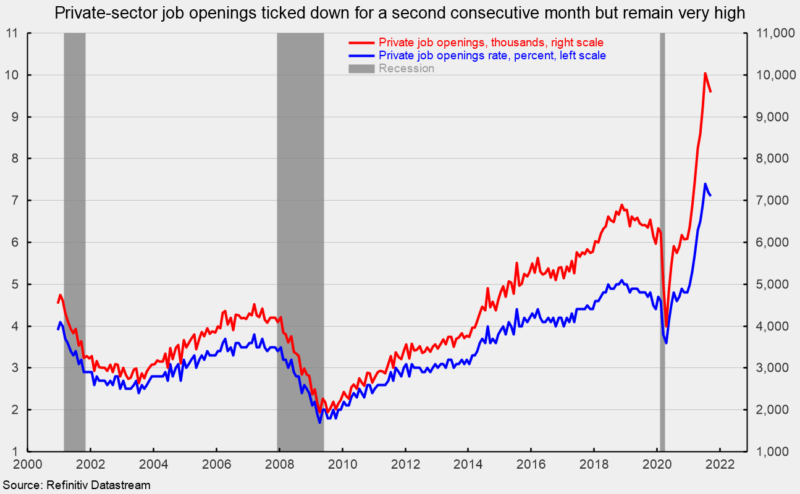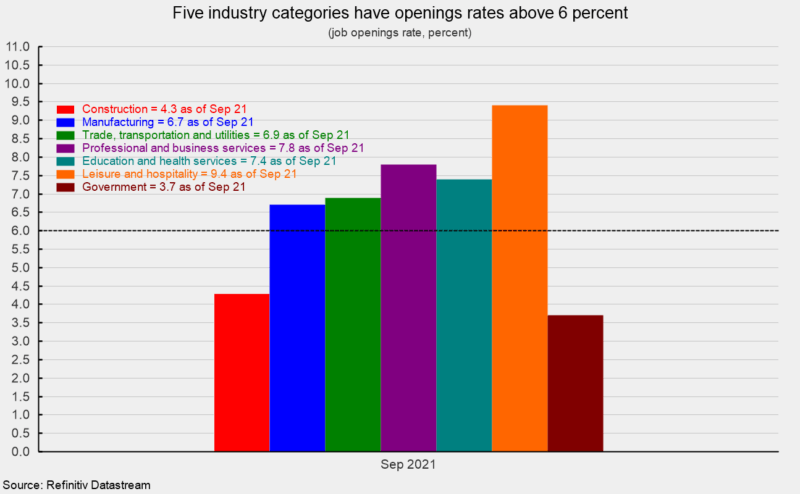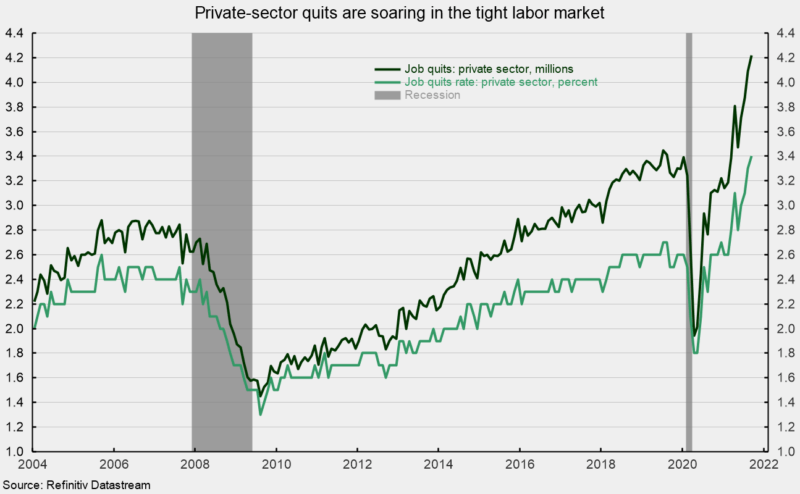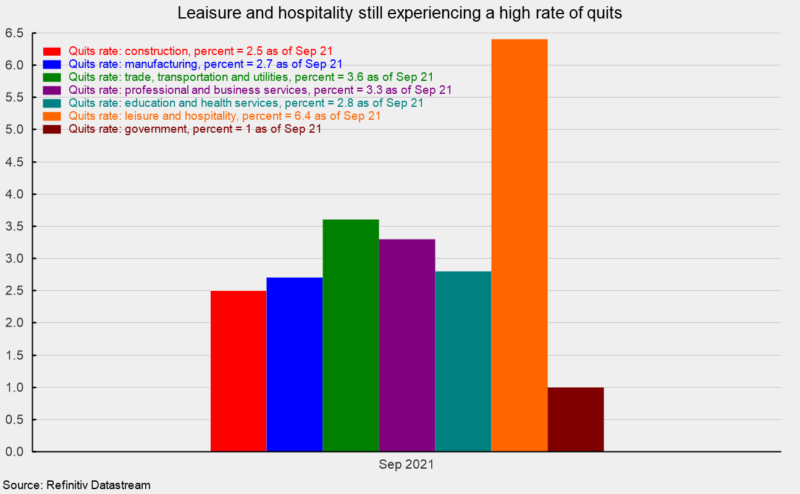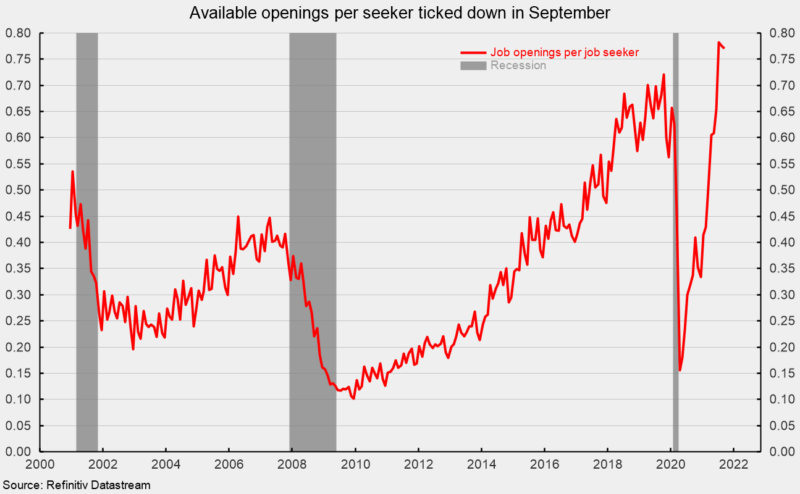Job Openings Fell Again in September but Remain Very High
The latest Job Openings and Labor Turnover Survey from the Bureau of Labor Statistics shows the total number of job openings in the economy fell to 10.438 million in September, down from 10.629 million in August. The number of open positions in the private sector decreased to 9.581 million in September, down from 9.775 million in August (see first chart). Despite a second consecutive month of decline, total and private sector openings remain extremely high by historical comparison.
The total job openings rate, openings divided by the sum of jobs plus openings, fell to 6.6 percent in September from 6.7 percent in August while the private-sector job-openings rate dropped to 7.1 percent from 7.2 percent.
Four industry categories have more than 1.5 million openings each: trade, transportation, and utilities (2.031 million), education and health care (1.878 million), professional and business services (1.786 million), and leisure and hospitality (1.586 million).
The highest openings rates were in leisure and hospitality (9.4 percent), professional and business services (7.8 percent), education and health care (7.4 percent), trade, transportation, and utilities (6.9 percent), and manufacturing (6.7 percent; see second chart).
The number of private-sector quits was 4.217 million, a record high, versus 4.087 million in August. Leisure and hospitality led with 987,000 quits followed by trade, transportation, and utilities with 984,000 quits and professional and business services with 706,000.
The total quits rate rose to 3.0 percent from 2.9 percent in the prior month while the private-sector quits rate rose to 3.4 percent versus 3.3 percent; both are at a record high (see third chart).
The quits rates among the private-sector industry groups is still dominated by leisure and hospitality with a rate of 6.4 percent, well ahead of the number two, trade transportation, and utilities, with a 3.6 percent quits rate and number three, professional and business services, with a 3.3 percent rate (see fourth chart).
From the worker perspective, labor market conditions remained very favorable in September. The number of openings per job seeker (unemployed plus those not in the labor force but who want a job) ticked down slightly to 0.770 in September from 0.776 in August and a record high 0.782 in July (see fifth chart).
Overall, today’s job openings data continue to suggest a very tight labor market. A significant number of former labor market participants remain on the sidelines (both the size of the labor force and the participation rate remain well below pre-pandemic levels), sustaining the tight labor market. Enticing people back to work could help ease supply problems and reduce upward pressure on prices. Overall, the outlook is for continued recovery but the headwinds to growth remain.

